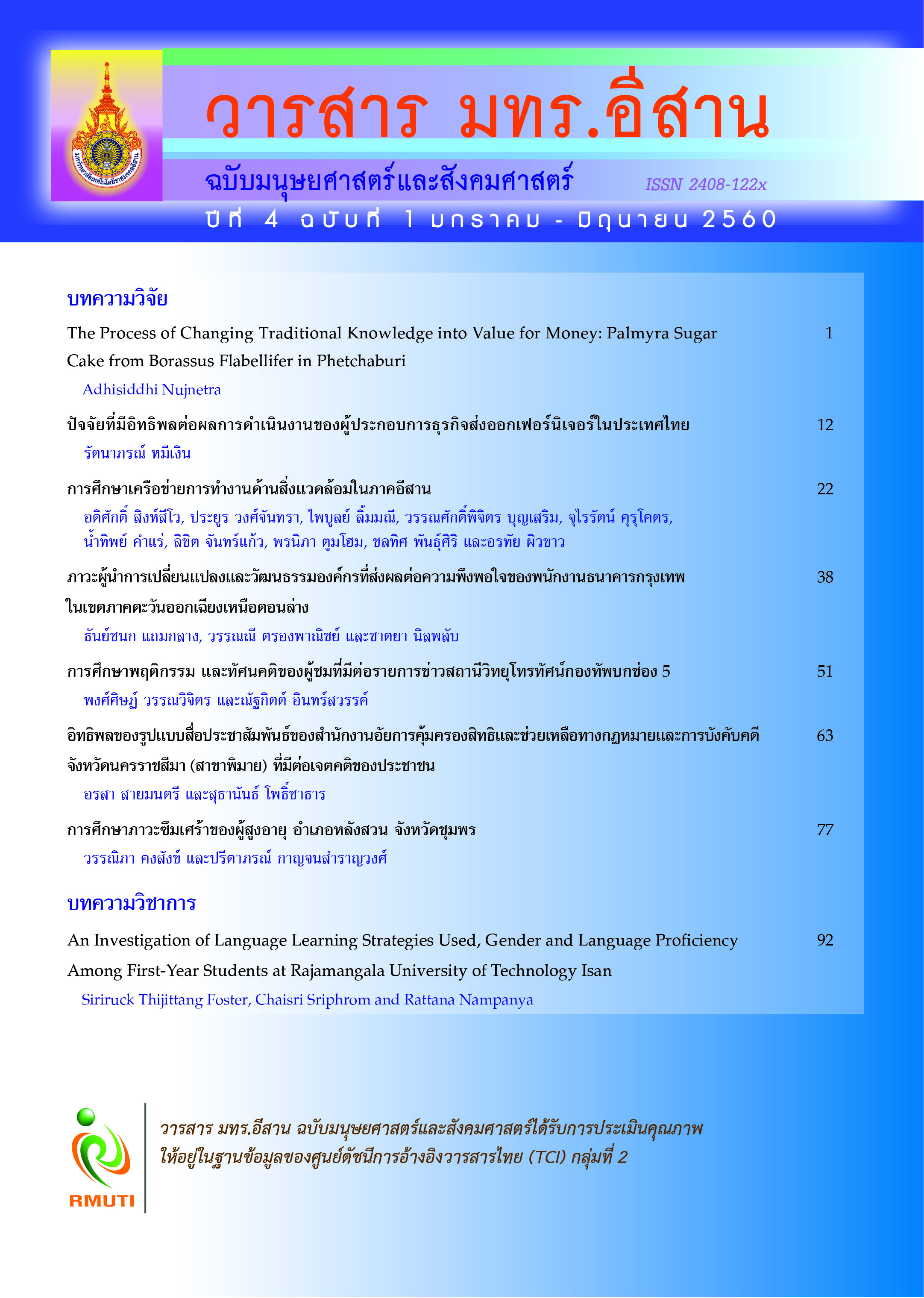The Process of Changing Traditional Knowledge into Value for Money: Palmyra Sugar Cake from Borassus Flabellifer in Phetchaburi
Main Article Content
Abstract
The objective of the research was to study the production process with regard to Palmyra sugar cake, which uses the traditional knowledge of local people, to determine and assess the monetary value of producers who use ancient techniques. A purposive sample of 21 producers was studied; financial analysis method was used to assess the monetary value. The research showed that Palmyra sugar cake is a cultural product in Phetchaburi. Initially, palm sugar cake was produced for subsistence reasons and, when demand grew, it became a commercial product. The community produces all materials in the production process. The expenditure for each step demonstrated that total cost (TC) was 254,213 Baht, broken into 144,928 and 109,285 Baht for fixed and variable costs, respectively. The revenue was 2,875,298 Baht, which showed a profit of 2,776,397 Baht. In terms of monetary value, the Net Present Value (NPV) was 1,148,959 Baht with an 8 % discount rate, Internal Rate of Return (IRR) was 28 % and the Benefit and Cost Ration (B/C) was 11.30. Thus, this shows that traditional knowledge generates revenue. The transfer of knowledge and conservation techniques of Palmyra trees need to be further promoted in order to maintain local wisdom and lifestyle.
Article Details
บทความที่ได้รับการตีพิมพ์เป็นลิขสิทธิ์ของมหาวิทยาลัยเทคโนโลยีราชมงคลอีสาน
ข้อความที่ปรากฏในบทความแต่ละเรื่องในวารสารวิชาการเล่มนี้เป็นความคิดเห็นส่วนตัวของผู้เขียนแต่ละท่านไม่เกี่ยวข้องกับมหาวิทยาลัยเทคโนโลยีราชมงคลอีสานและคณาจารย์ท่านอื่นๆในมหาวิทยาลัยฯ แต่อย่างใด ความรับผิดชอบองค์ประกอบทั้งหมดของบทความแต่ละเรื่องเป็นของผู้เขียนแต่ละท่าน หากมีความผิดพลาดใดๆ ผู้เขียนแต่ละท่านจะรับผิดชอบบทความของตนเองแต่ผู้เดียว
References
Howkins, J. (2007). The Creative Economy: How People Make money from Ideas. UK: Penquin.
Johnson, D. (1992). Palm Utilization and Management in Asia: Examples for the Neotropics. Bull. Inst. fr. tudesandine. Vol. 21. No. 2. pp. 727-740
Khamrod, P. (2009). Sustainability of Palm Sugar Production, Chainat Province. Master of Science Thesis, Mahidol University, Nakhonpathom. (in Thai)
Oranut, K. (2008). An Analytical Study of Palm Wood Products in Phetchaburi. Master of Educatlion Thesis, Srinakharinwirot University. (in Thai)
Phaichamnan, M., Posri,W. and Meenune, M. (2010). Quality Profile of Palm Sugar Concentrate Produced in Songkhla province, Thailand. International Food Research Journal. Vol. 17. pp. 425-432
Phetchaburi Agricultural Office, (2016). Crop Production Report Data year 2009-2013. Department of Agricultural Extension, Thailand. (in Thai)
Sottipan, P., Sinchai, S., Priswong, T., Siriluk, P., Yodmanee, S. and Sripaiboon, S. (2004). Palmyra Palm Culture: The Process of Creation a Strong Community. Bangkok: Thailand Research Fund. (in Thai)
Vengaiah PC., Ravindrababu D., Murthy GN.,Prasad KR. (2013). Jaggery form Palmyrah palm (Boassus flabellifer L.) - Present Status and Scope. Indian Journal Traditional Knowledge. Vol. 12. No. 4. pp. 714-717


